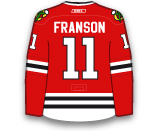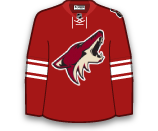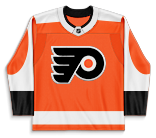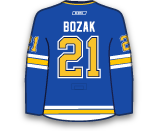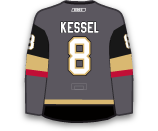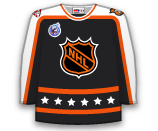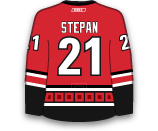NHL Injury Report
Daily Faceoff NHL injury report compiles all of the reported injuries from across the National Hockey League so you can see who is set to be sidelined, what their injury is, and how long they are expect to be out of commission. Injury updates are some of the most important NHL player news for any hockey fan to stay on top of, as winning or losing can ultimately be decided by the absence of a key player from within a team’s lineup. If you’re an avid hockey bettor, it’s crucial to your betting success that you stay informed on the latest injury news. Check out the latest NHL injury report on this page and see who’s set to miss some time this NHL season.
Reading the NHL Injury Report
The daily NHL injury report provides you with information regarding the type of injury a player is suffering from, the severity of it, as well as the timeline for their potential return. Common injury designations are day-to-day (almost fully healthy) out (not healthy, but not a long-term issue), and injured reserve/long-term injured reserve (out for an extended period of time).
Along with our regularly updated NHL injury report, you can also stay in the know regarding NHL injuries through team reporters/beat writers, social media channels and journalists, as well as official site reports from the NHL or their respective clubs.
Common NHL Injuries
In a physical sport such as hockey, injuries are a necessary evil as the toll it takes on each player’s body builds up over the course of an entire season. With the speed the game is played at the NHL level, it is common place for various injures to occur on a game-to-game basis. Whether it’s from a hard hit, inadvertent contact from a stick, or even being pelted by a blocked shot or deflected puck, it can be nearly impossible to avoid getting banged up over the course of an NHL contest.
Unlike many other professional sports leagues across the globe, the NHL tends to keep injury details close to the vest, reporting injury designations as either an upper body injury or lower body injury after players undergo tests. Below we’ll dive into some of the most common injuries that occur across the NHL, how they can affect players, and how long these injuries can sideline them from action.
Upper Body Injuries
Upper body injuries encompass all injuries that occur from the waist and up which includes the torso, arms, back, as well as the head. Common upper body injuries include shoulder dislocation, clavicle fractures, and broken/sprained wrists. An upper body injury could happen in a number of ways.
One of the most common and severe injuries that occurs across the NHL are concussions. Concussions are caused when the brain bounces or twists within the skull. This can be caused in a number of ways in hockey, generally from a hard impact whether that’s against another players body, the ice, or the boards. Recovery timelines for concussions vary from case-to-case with some players suffering mild effects and clearing protocol within a few weeks, to drastic scenarios where a player could miss the remainder of the season.
Lower Body Injuries
While players are often able to play through upper body injuries, a lower body injury can force a player to miss an extended amount of ice time depending on the location and severity of the issue. Lower body injuries encompass all issues from the waist down.
With so many pivotal muscle groups found within the lower body, these types of injuries often leave athletes unable to practice, let alone compete. Arguably the worst lower body injury a player can experience is a knee injury. From ACL tears, to MCL strains, or even broken patellas, there a numerous key ligaments and muscles, within the knee that are essential to a hockey players ability to hit the ice. Severe injuries to the knee can lead to lengthy absences from the lineup as well as a host of potential issues down the line of a players career if not successfully rehabbed. Other common lower body injuries in hockey include hip pointers, groin strains, and sprained/broken ankles.
Reserve Lists
In the NHL, players are often moved in and out of the lineup due to injury but when an issue occurs in which a player is set to miss an extended period of time, they must be placed under the official designation of the injured reserve list. NHL teams utilize reserve lists as a way to provide injured players time to recover from their physical ailments, as well as to free up space within their active roster to replace the output of their missing player.
There are two versions of reserve lists in the NHL, the injured reserve list (IR) and the long term injured reserve list (LTIR). Each reserve list holds their own distinctions for players to qualify, as well as how teams are able to replace members of the roster when they are forced to send an injured athlete to an injury reserve list. Below are the key differences between each reserve list and how an injured player can find themselves placed there in a season.
Injured Reserve List
The injured reserve list (IR) is for any player who is set to miss seven calendar days or more due to injury, disablement or illness is designated. Once a player is sent to injured reserve they must spend at least seven calendar days out of the teams lineup, but is still able to attend practices, team meetings, as well as travel with their team. Players are eligible to stay on the injured reserve until they are cleared by their team medical staff as ready and fit to return to competition…. When a player is sent to the injured reserve list, clubs are able to call up players from their roster to replace them whether that is from a scratched member of their main roster, a call up from the minors (AHL/ECHL), or by signing a free agent (cap space permitting).
Long Term Injured Reserve List
Similar to the injured reserve list, the long term injured reserve list (LTIR) is designed for teams to make up for severe injuries that have occurred to a player during the season. A player can be placed on the LTIR if they have been evaluated by medical staff and are ruled out of action for a minimum of 24 calendar days or 10 NHL games. Players often spend a much longer time on this reserve list once they are placed there due to the nature and severity of their injuries.
One major difference between the IR and the LTIR is the ability to circumvent the salary cap. When a player is placed on the LTIR, teams are able to pull from what is referred to as the “LTIR Pool”. The LTIR pool is the amount in which a team is granted in cap space after a player has been assigned to the LTIR. This amount is determined by subtracting the total amount of cap space remaining for a team from the affected player’s salary cap hit for the season. The amount given in the LTIR pool is also dependent on whether a team is under or over the salary cap at the beginning of the regular season.
For example, if a player who has a $2 million annual cap hit is placed on the LTIR and their team was under the salary cap by $500K, they would deduct the $500K in remaining cap space from the player’s annual salary hit, leaving the team with $1.5M to spend on replacements for their injured player.
However, if a team is over the salary cap to begin the regular season the LTIR pool is divided differently. In this case whatever the value of the overage in salary cap is at the start of the season will be the LTIR pool funds available for a club. For example, if a team is over the salary cap by $1 million, and a player with a $5 million cap hit is placed on the LTIR, their LTIR pool is valued at $1M as that is the amount they were over the cap to begin the season.
When a player is removed from the LTIR, the team must be under the annual salary cap hit on that day.
Considering Injuries When Placing NHL Bets
Considering injuries when placing NHL bets is incredibly important. By staying informed about the latest injury news heading into a matchup, you can better formulate how a matchup may play out based on the personnel available for action. Here’s how you can use the NHL injury report to influence your next bet and help give you a knowledgeable boost on all your wagers placed on tonight’s clashes.
Moneyline and Puck Line Bets
When placing a moneyline or puck line bet, knowing who is suiting up for action can make or break your chances of winning your wager. It only takes the absence of one player to shift the lines and change the outcome of the game. By waiting for the latest injury report prior to puck drop, bettors can make informed decisions before throwing down a wager on an upcoming matchup.
For example, if the New Jersey Devils are set to play the Columbus Blue Jackets but Jack Hughes is out due to injury, you may not want to back the Devils on the moneyline. Instead, you can use this information to reevaluate where the best value is on the adjusted moneyline and puck line for this contest.
Goal Total Bets
Each team relies heavily on their top goal-scorers to produce on a nightly-basis. If one of these performers is sidelined due to injury this could majorly effect the final score of the game. For example, if Minnesota Wild star forward Kirill Kaprizov is out of action due to injury heading into a contest against the New York Islanders, you could use this information to your advantage by betting the Under on the matchup due to the elite goal-scorer’s absence.
The same can be said inversely about a team’s goaltending. If the Tampa Bay Lightning are set to be without superstar netminder Andrei Vasilevskiy in their clash with the Toronto Maple Leafs, it may be in your best interest to bet the Over as his backup may not be able to handle the oppositions high-powered offence.
Prop Bets
Player injuries are also a prevalent factor to take into account before placing a prop bet on a matchup. If a team is without some of their top line players, it can leave the door open for someone lower in the depth chart to step up in their place.
For example, if The Ottawa Senators are taking on the San Jose Sharks, but Brady Tkachuk is listed as out on the latest injury report, other members of the Senators may be due for an increase in output as they look to make up for the void in production left by their team captain.
Futures Odds
While you don’t need a crystal ball to place a successful futures bet, knowing the latest injury news for each team can make a positive impact on your bets potential success. The NHL regular season is a vigorous journey that takes a heavy toll on the bodies of the athletes competing, and can sometimes lead to key members of a roster winding up on the injured reserve as a result. If a team does end up with an injury to one of their top players, this could completely derail their hopes of competing into the Stanley Cup Playoffs.
For example, if Colorado Avalanche superstar forward Nathan Mackinnon suffers a season-ending injury just before the All-Star break, you can expect to see their Stanley Cup future odds drop drastically as their best player is put on the shelf. On the other hand, you can also expect to see the ripple effects of this change in odds as other top contenders see their Stanley Cup odds increase as the competition among the top of the league is dropped.
NHL Injury Report FAQs
How often does the NHL injury report get updated? The NHL injury report is updated daily so that you can see the latest injury news ahead of puck drop in any of today’s matchups. Seeing timely updates to the NHL injury report can make a major impact on your daily fantasy sports picks and wagers on a particular game. All information provided on the NHL injury report is provided directly by the NHL and each respective franchise to ensure accuracy.
How long can a player stay on the injured reserve list? While the minimum amount of time spent on the injured reserve list is seven calendar days, there is no maximum amount of time that a player can be placed on the injured reserve list. If a player is set to be sidelined for longer than 24 calendar days or 10 NHL games, then a club may opt to place them on the long-term injured reserve instead. This allows franchises with the ability to exceed the salary cap while a player is placed on this reserve list.
How long does it take to recover from an ice hockey injury? No injury recovery timeline is the same as another as there are several factors that go into the rehab process for a player being affected by injury. Factors include but are not limited to, injury severity, player injury/medical history, age, as well as the location of the injury. Some injuries are able to clear up in a matter of days, while others may take an athlete out of action for the entirety of a season.


